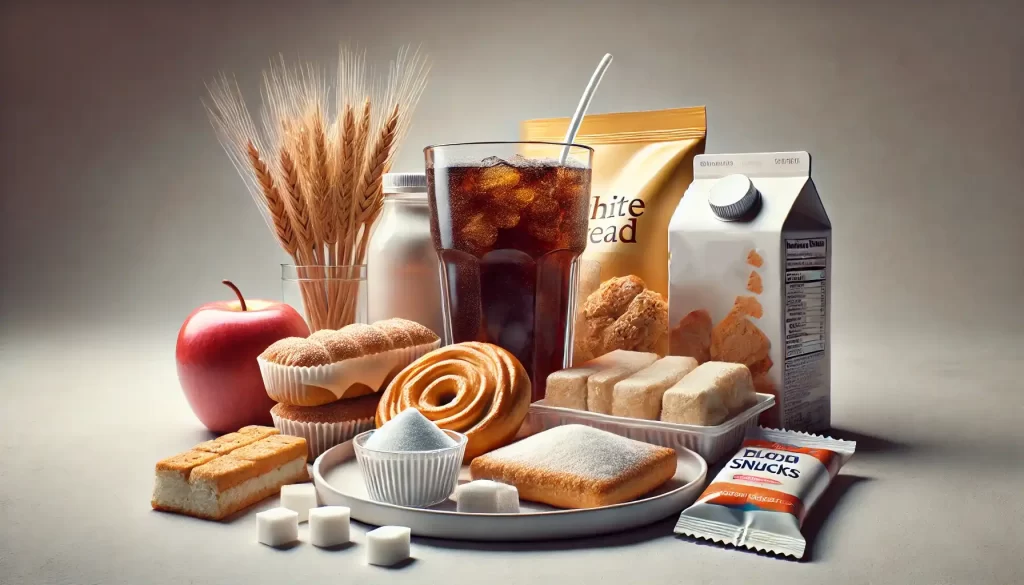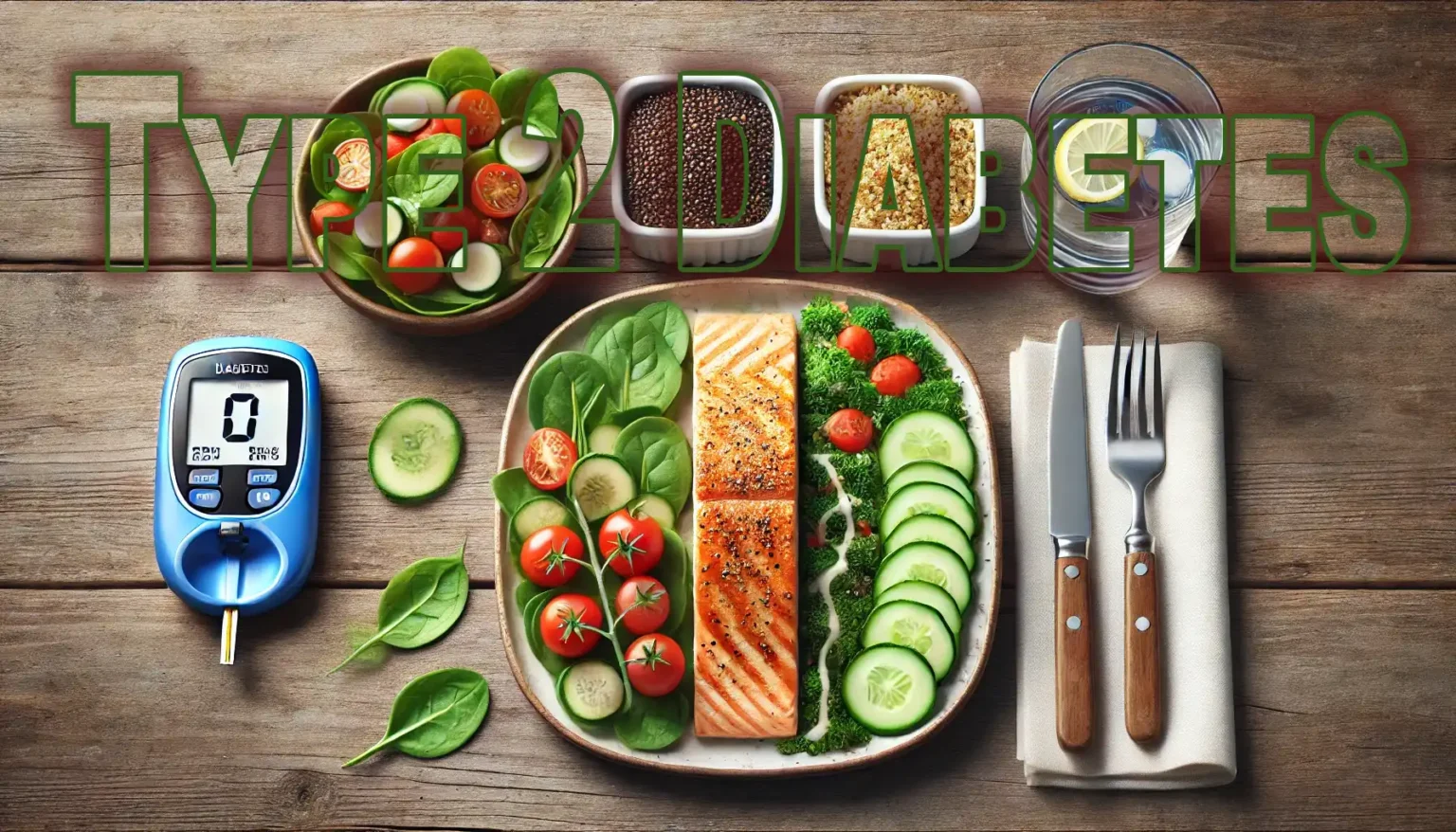Managing type 2 diabetes often starts with the right diet. Food choices play a crucial role in maintaining healthy blood sugar levels, reducing complications, and improving overall well-being. With so many dietary options available, it can be overwhelming to know which one to choose. The key is finding a sustainable plan tailored to your needs and lifestyle.
In this guide, we’ll explore the best diets for managing type 2 diabetes, from the Mediterranean diet to low-carb and plant-based approaches. You’ll learn how these diets work, which foods to include, and practical tips to create a diabetes-friendly meal plan. Whether you’re newly diagnosed or looking for better control, this guide offers actionable insights to support your journey.
In this guide, you’ll learn:
- Top dietary approaches proven to help manage type 2 diabetes.
- Foods to prioritize and foods to avoid for blood sugar control.
- Practical meal planning tips for a sustainable and balanced diet.
Let’s dive in and discover the best diets to manage type 2 diabetes effectively!
Understanding Type 2 Diabetes
Type 2 diabetes is a chronic condition that affects the way your body processes blood sugar (glucose), a key source of energy for your cells. Unlike type 1 diabetes, where the body doesn’t produce insulin, type 2 diabetes develops when your body becomes resistant to insulin or doesn’t produce enough of it to maintain normal blood sugar levels.
Overview of Type 2 Diabetes and Its Causes
In individuals with type 2 diabetes, the pancreas still produces insulin, but the body’s cells don’t respond effectively to it. This is called insulin resistance, and it leads to higher levels of glucose circulating in the bloodstream. Over time, the pancreas may produce less insulin, further exacerbating the condition.
Key Causes and Risk Factors:
- Genetics: Family history of diabetes significantly increases risk.
- Lifestyle Factors: A sedentary lifestyle and diets high in processed foods and sugar contribute to insulin resistance.
- Obesity: Excess weight, particularly around the abdomen, is strongly linked to type 2 diabetes.
- Age: While it can occur at any age, type 2 diabetes is more common in people over 45.
- Other Conditions: High blood pressure, high cholesterol, and polycystic ovary syndrome (PCOS) increase risk.
Importance of Diet in Managing Blood Sugar Levels
Diet is one of the most critical components of managing type 2 diabetes. The foods you eat directly impact your blood sugar levels, insulin sensitivity, and overall health. A well-balanced, diabetes-friendly diet focuses on:
- Stabilizing Blood Sugar Levels: Eating low-glycemic foods that release glucose slowly into the bloodstream prevents spikes and crashes.
- Reducing Insulin Resistance: Diets rich in fiber and healthy fats improve the body’s response to insulin.
- Preventing Complications: Proper nutrition helps reduce the risk of complications like heart disease, nerve damage, and kidney problems.
Key Dietary Goals:
- Maintain consistent carbohydrate intake to avoid sudden glucose fluctuations.
- Prioritize whole, unprocessed foods over refined sugars and carbs.
- Balance meals with a mix of lean protein, healthy fats, and fiber-rich carbohydrates.
What Makes a Diet Effective for Type 2 Diabetes?
A diet that effectively manages type 2 diabetes focuses on stabilizing blood sugar levels, improving insulin sensitivity, and promoting overall health. The right dietary choices can make a significant difference in how well you control the condition and prevent complications. Here’s what makes a diabetes-friendly diet effective.
Focus on Low-Glycemic Index Foods
The glycemic index (GI) measures how quickly carbohydrates in food raise blood sugar levels. Foods with a low GI are digested and absorbed slowly, preventing rapid glucose spikes. Incorporating these foods into your diet helps maintain steady blood sugar levels throughout the day.
Examples of Low-GI Foods:
- Non-starchy vegetables: broccoli, spinach, and bell peppers.
- Whole grains: quinoa, barley, and brown rice.
- Legumes: lentils, chickpeas, and black beans.
- Fruits: berries, apples, and oranges.
By focusing on low-GI foods, you can avoid the energy crashes and hunger pangs caused by blood sugar spikes.
Importance of Balanced Meals with Carbs, Protein, and Fat
A balanced meal combines the three key macronutrients—carbohydrates, proteins, and fats—to provide sustained energy and better blood sugar control. Each plays a unique role:
- Carbohydrates: Opt for complex carbs like whole grains and vegetables, which digest slowly and have a lower impact on blood sugar.
- Proteins: Lean protein sources like fish, chicken, tofu, and legumes slow the absorption of glucose and keep you feeling full longer.
- Healthy Fats: Fats from avocado, nuts, seeds, and olive oil improve insulin sensitivity and provide lasting energy.
Meal Composition Tip: Aim for half your plate to be non-starchy vegetables, one-quarter lean protein, and one-quarter whole grains or starchy vegetables.
Reducing Sugar, Refined Carbs, and Processed Foods
Refined carbs and added sugars are quickly digested, causing blood sugar spikes and contributing to insulin resistance over time. Processed foods are often high in calories, sodium, and unhealthy fats, further increasing the risk of complications.
Foods to Limit or Avoid:
- Sugary beverages: soda, energy drinks, and sweetened coffee.
- Refined carbs: white bread, pastries, and pasta.
- Processed snacks: chips, crackers, and packaged desserts.
- High-sodium ready-to-eat meals: frozen dinners, canned soups, and fast food.
Replacing these with whole, unprocessed foods helps regulate blood sugar and promotes better overall health.
The Bottom Line
An effective diet for type 2 diabetes emphasizes low-glycemic index foods, balances macronutrients in every meal, and minimizes sugar and processed foods. These strategies not only help control blood sugar levels but also reduce the risk of complications and improve your quality of life. Adopting this approach ensures your meals are nourishing, satisfying, and aligned with your health goals.
Best Diets for Managing Type 2 Diabetes
Several diets have been proven effective for managing type 2 diabetes by stabilizing blood sugar levels, reducing insulin resistance, and improving overall health. Here are five of the best dietary approaches to consider.
The Mediterranean Diet
The Mediterranean diet emphasizes whole, natural foods rich in nutrients and healthy fats, making it one of the best diets for diabetes management.
- Key Features:
- High intake of healthy fats from olive oil, nuts, and seeds.
- Inclusion of whole grains, legumes, fruits, and vegetables.
- Moderate consumption of fish and poultry.
- Benefits:
- Helps maintain stable blood sugar levels due to its focus on low-glycemic foods.
- Improves heart health, reducing the risk of cardiovascular complications associated with diabetes.
Example Meal: Grilled fish with a quinoa salad, fresh greens, and a drizzle of olive oil.
The DASH Diet (Dietary Approaches to Stop Hypertension)
Originally designed to lower blood pressure, the DASH diet also benefits those managing type 2 diabetes.
- Key Features:
- Focus on fruits, vegetables, whole grains, and low-fat dairy.
- Low intake of saturated fats and processed sugars.
- Benefits:
- Improves insulin sensitivity and blood sugar control.
- Lowers blood pressure, reducing the risk of diabetes-related complications.
Example Meal: Steamed broccoli, roasted chicken breast, and a side of brown rice.

The Low-Carb Diet
A low-carb diet minimizes carbohydrate intake, which helps manage blood sugar levels effectively.
- Key Features:
- Reduced focus on carbs, replacing them with lean proteins and healthy fats.
- Examples include non-starchy vegetables, fish, eggs, and nuts.
- Benefits:
- Prevents blood sugar spikes by limiting carbohydrate intake.
- Encourages weight loss, which can improve insulin sensitivity.
Example Meal: Grilled salmon with sautéed spinach and avocado slices.
The Plant-Based Diet
Plant-based diets are rich in fiber and low in saturated fats, making them ideal for managing type 2 diabetes.
- Key Features:
- Focus on whole, plant-based foods, such as vegetables, fruits, whole grains, and legumes.
- Avoids or limits animal products.
- Benefits:
- High fiber content improves blood sugar control and digestion.
- Reduces inflammation and supports heart health.
Best Plant-Based Proteins: Lentils, chickpeas, tofu, tempeh, and edamame.
Example Meal: Lentil stew with whole-grain bread and a side of fresh salad.
The Paleo Diet (Modified for Diabetes)
The paleo diet, when modified for diabetes, focuses on eating whole, unprocessed foods while avoiding refined sugars and grains.
- Key Features:
- Includes lean meats, fish, fruits, vegetables, nuts, and seeds.
- Eliminates processed foods, sugar, and grains.
- Benefits:
- Stabilizes blood sugar by removing refined carbs.
- Encourages nutrient-dense meals that improve overall health.
Example Meal: Grilled chicken with roasted sweet potatoes and a side of asparagus.
Foods to Include in a Diabetes-Friendly Diet
Managing type 2 diabetes begins with making informed food choices that stabilize blood sugar levels, improve insulin sensitivity, and support overall health. Incorporating the right foods into your diet ensures you meet your nutritional needs while keeping your blood sugar in check.
Non-Starchy Vegetables
Non-starchy vegetables are low in carbohydrates and glycemic index, making them ideal for managing blood sugar levels. They’re packed with vitamins, minerals, and fiber that help regulate digestion and keep you feeling full longer.
Examples of Non-Starchy Vegetables:
- Spinach: Rich in magnesium, which supports blood sugar regulation.
- Broccoli: Contains fiber and antioxidants like sulforaphane that combat inflammation.
- Bell Peppers: Low in carbs and high in vitamin C, which supports immune health.
How to Incorporate: Add these vegetables to salads, stir-fries, or as a side dish to your main meals.
Healthy Fats
Healthy fats provide a steady source of energy and improve insulin sensitivity, making them a key component of a diabetes-friendly diet. They also promote heart health, reducing the risk of cardiovascular complications linked to diabetes.
Examples of Healthy Fats:
- Avocado: A rich source of monounsaturated fats that help reduce cholesterol and stabilize blood sugar.
- Olive Oil: Contains antioxidants and healthy fats that support heart and vascular health.
- Nuts (Almonds, Walnuts): Packed with omega-3 fatty acids, fiber, and protein for sustained energy.
How to Incorporate: Use olive oil as a dressing, slice avocado onto your salad, or enjoy a handful of nuts as a snack.
Lean Proteins
Proteins help regulate blood sugar by slowing digestion and preventing glucose spikes after meals. Lean protein sources are also low in saturated fats, which is beneficial for heart health.
Examples of Lean Proteins:
- Chicken (Skinless Breast): A low-fat, high-protein option that pairs well with non-starchy vegetables.
- Fish (Salmon, Mackerel): Rich in omega-3 fatty acids that combat inflammation and improve heart health.
- Tofu and Legumes: Plant-based proteins like tofu, lentils, and chickpeas are fiber-rich and perfect for a balanced meal.
How to Incorporate: Grill chicken or fish, add tofu to a stir-fry, or prepare a hearty lentil soup.
Balancing Your Plate
To create a well-rounded, diabetes-friendly meal:
- Fill half your plate with non-starchy vegetables.
- Allocate one-quarter to lean proteins.
- Use the remaining one-quarter for whole grains or starchy vegetables, if desired.
Foods to Avoid for Better Blood Sugar Control
To effectively manage type 2 diabetes, it’s essential to avoid foods that cause blood sugar spikes, reduce insulin sensitivity, or contribute to long-term complications. Here are the key categories of foods to limit or eliminate from your diet.

Sugary Drinks and Snacks
Foods and beverages high in added sugars can cause rapid spikes in blood sugar levels, making them particularly harmful for diabetes management.
Examples to Avoid:
- Sugary drinks: soda, energy drinks, and sweetened teas.
- Snacks: candy bars, cookies, and cakes.
Why to Avoid:
These foods provide empty calories with little to no nutritional value, leading to weight gain and increased insulin resistance. Instead, choose water, unsweetened beverages, and fresh fruit to satisfy your cravings.
Refined Carbs
Refined carbohydrates are quickly digested, causing a surge in blood sugar followed by a rapid drop, which can leave you feeling hungry and tired.
Examples to Avoid:
- White bread and white rice.
- Pasta made from refined flour.
- Pastries, donuts, and other baked goods.
Why to Avoid:
Refined carbs lack fiber, which helps slow the absorption of sugar into the bloodstream. Swap these for whole-grain options like brown rice, quinoa, and whole-grain bread.
High-Sodium Processed Foods
Processed foods often contain excessive sodium, unhealthy fats, and added sugars, all of which can negatively impact blood sugar control and overall health.
Examples to Avoid:
- Packaged meals like frozen dinners and canned soups.
- Processed meats such as bacon, sausages, and deli meats.
- Chips, crackers, and other salty snacks.
Why to Avoid:
High sodium intake can increase blood pressure and exacerbate complications associated with diabetes. Instead, prepare meals at home using fresh, whole ingredients to control sodium levels.
Creating a Personalized Meal Plan
A well-crafted meal plan tailored to your individual needs is one of the most effective tools for managing type 2 diabetes. Personalization allows you to balance your preferences, lifestyle, and nutritional needs while keeping your blood sugar levels stable. Here’s how to build and maintain a meal plan that works for you.
Tips for Portion Control and Meal Timing
Portion control and meal timing are critical for managing blood sugar. Consistently eating the right amount of food at the right times helps prevent glucose spikes and crashes.
Portion Control Tips:
- The Plate Method: Fill half your plate with non-starchy vegetables, one-quarter with lean protein, and one-quarter with whole grains or starchy vegetables.
- Measure Servings: Use measuring cups or a kitchen scale to portion out carbohydrates, proteins, and fats.
- Mindful Eating: Eat slowly and stop when you feel satisfied, not full.
Meal Timing Tips:
- Eat Regularly: Space meals evenly throughout the day to maintain stable blood sugar levels. Aim for three balanced meals and 1-2 small snacks as needed.
- Don’t Skip Meals: Skipping meals can lead to blood sugar fluctuations and overeating later.
Importance of Consulting a Registered Dietitian
A registered dietitian (RD) is an invaluable resource for creating a personalized diabetes-friendly meal plan. They can:
- Tailor Nutrition Advice: Provide guidance based on your specific health goals, blood sugar levels, and any additional conditions.
- Address Challenges: Help you navigate dietary restrictions, food allergies, or lifestyle constraints.
- Support Long-Term Success: Offer ongoing advice and adjustments as your needs change.
Consulting a dietitian ensures your meal plan is balanced, sustainable, and effective in managing your diabetes.
Using Food Diaries or Apps to Track Progress
Tracking your meals and progress helps you understand how food choices impact your blood sugar and identify areas for improvement.
How to Track Effectively:
- Use Food Diaries: Write down what you eat, portion sizes, and how you feel after meals.
- Try Diabetes-Friendly Apps: Apps like MyFitnessPal, Carb Manager, or Glucose Buddy can simplify tracking and provide valuable insights.
- Monitor Patterns: Look for trends in blood sugar levels related to certain foods or meal timings.
Tracking helps you stay accountable, make informed adjustments, and celebrate progress in your diabetes management journey.
The Bottom Line
Creating a personalized meal plan with a focus on portion control, timely meals, and professional guidance can transform your approach to managing type 2 diabetes. Use tracking tools to refine your plan, stay consistent, and enjoy diabetes-friendly recipes that fit your lifestyle. With the right strategies in place, you’ll be on the path to healthier, more balanced living!
Conclusion
Managing type 2 diabetes begins with understanding how diet impacts your blood sugar and overall health. By adopting one of the best diets for managing type 2 diabetes, such as the Mediterranean, DASH, low-carb, plant-based, or modified Paleo diet, you can take significant steps toward better blood sugar control and improved well-being.
Incorporating diabetes-friendly foods like non-starchy vegetables, healthy fats, and lean proteins into your meals helps stabilize blood sugar levels while nourishing your body. At the same time, avoiding sugary drinks, refined carbs, and processed foods reduces glucose spikes and supports long-term health.
Creating a personalized meal plan with the help of tools like portion control, food tracking apps, and guidance from a registered dietitian ensures you stay consistent and empowered in your journey. Remember, diabetes management is not about restriction but balance—finding meals that are both enjoyable and aligned with your health goals.
Take control of your health one plate at a time, and make sustainable choices that support a brighter, healthier future. Your journey toward better diabetes management starts today!


1 thought on “Best Diets for Managing Type 2 Diabetes: A Complete Guide”